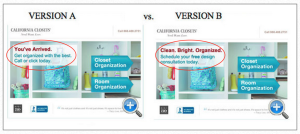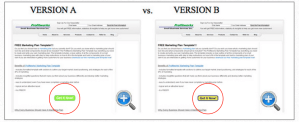Important Messaging? Test It!
Guest Post by Craig Baldwin, Co-Founder of Sqrl. Craig is now Partnerships Director at Losant.
As a marketer, I’m obsessed with two things: the message of our company and the testing of said message. At the end of the day, that’s the core of every marketing department in the history of the world. The message (via design, content, social media, advertising, call it what you like) is all a reflection of your service or product.
So how do you improve that message? You test it.
As part of my work at Sqrl, I interacted with partners at firms of all sizes. I saw them jockeying for position over one another, employing content marketing strategies, launching new Twitter accounts, and hey, maybe even springing for a website redesign. But what good were these activities if the performance was not constantly tracked and variations tested?
Too often these firms spent loads of money on strategies that didn’t yield results.
Many ran blindly down the rabbit hole of “a blog post told me to do this.”
Yet marketing is not one size fits all.
Make sure for each activity you hypothesize, track, record results, and repeat.
For three months, every time I met a new person I explained the value proposition of Sqrl in a different manner. I wanted to gauge their reaction and see what worked. While it’s not your typical version, this was a test. The first phrase to light up a face? “Sqrl structures communication for the working world.”
Want to see an example of how this works on the web? Here are examples from some of the masters of A/B testing, Unbounce:
Version A outperformed Version B by 115%. Let me repeat that, 115%. The ad leading to this page paired much better with the first headline than the second. See what a big difference a slight change in copy can make?
I know it’s hard to believe, but the yellow button outperformed the green one by 14.5%. It seems subtle, but that 14.5% quickly adds up.
These are just two small examples of the type of things that make a huge difference over the weeks, months, and lifetimes of accounting firms. And I’d be willing to bet no one in your firm is doing this, which is a shame because you’re probably leaving real money on the table.
This scientific approach to optimizing your message isn’t just a “web tactic.” You can, and should, be using it everywhere: print, sponsorships, lunches, conversations, everything.
Hypothesize, track, record results, and repeat.
Craig Baldwin


